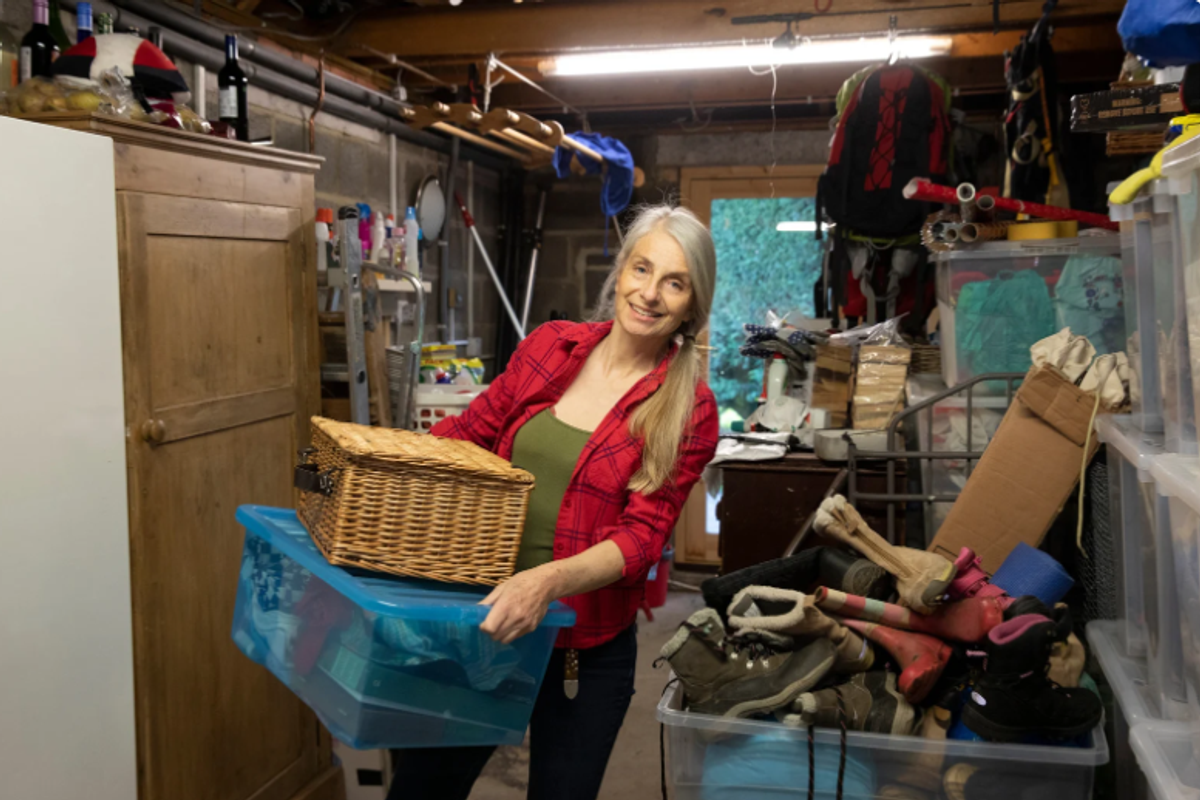Person who uses a wheelchair shares tips for being less weird around them
"It's wild to me how often people will just roll me out of their way. Please don't do this."

A wheelchair user offered some helpful tips for how to interact with them in daily life.
One of the best things about social media—besides the hilarious cat videos—is how it gives us all an opportunity to learn from one another. The ability to share an experience or a piece of wisdom or advice and have it be carried far and wide can be incredibly useful, especially when it comes from someone whose voice may not be heard as often as it should.
A perfect example is a 2022 thread by Ada Hubrig (@AdamHubrig) on Twitter explaining how and how not to interact with a person in a wheelchair. Hubrig says using a wheelchair has been "life-changing in the best way" for them, but the way they are treated when they are using a wheelchair can be annoying, frustrating, hurtful or just downright weird.
Some people don't have regular interactions with people who use wheelchairs and may have questions about what's appropriate and what's not. Some people might make assumptions about people using wheelchairs or be completely oblivious to how their prejudices are impacting their behavior. Hubrig's thread not only clarified some common issues wheelchair users deal with, but also opened up the conversation for people to ask some of the less obvious questions.
Hubrig opened their thread by explaining that they actually love their wheelchair, as they can't stand or walk for more than 10 minutes without it. However, they loathe how people treat them when they're using it.
Then they shared some tips on how to do better:
"First, remember that wheelchair users are people," they wrote. "We are more similar to you than different, we're just sitting down while you're standing up. You're likely around other people who are sitting as you stand all the time. Don't make it weird."
First, remember that wheelchair users are people. We are more similar to you than different, we're just sitting down while you're standing up.\n\nYou're likely around other people who are sitting as you stand all the time. Don't make it weird (2/10)— Ada Hubrig (@Ada Hubrig) 1645548619
"Second, remembering that we're people, respect our autonomy," they continued. "If we're speaking and you have a question for me, don't ask my partner who is standing. As an example, medical professionals will often ask my partner my symptoms when I am RIGHT THERE. Please notice us."
The third piece of advice was to never touch a person's wheelchair or other mobility or medical advice unless you have been given permission. Hubrig said that people will often just roll them out of the way.
Yeah, don't do that. You wouldn't pick up a standing person and move them out of the way (hopefully). Same concept.
Third, please DO NOT touch a person's wheelchair (or other mobility/medical devices) without that person's permission. \n\nIt's wild to me how often people will just roll me out of their way.\n\nPlease don't do this (4/10)— Ada Hubrig (@Ada Hubrig) 1645548620
Hubrig went on to explain that no one is entitled to anyone else's medical history or trauma. "I get that you may mean well, but asking 'what happened' can be more difficult for some people than you realize," they wrote. "It's a lot of emotional labor to answer."
On a related note, don't ask about people's genitals. Ever. Seriously.
Related to not asking wheelchair users abt medical info, stop asking strangers about their genitals (really, it's super weird. Just don't). \n\nI don't know if this is bc I'm in a wheelchair, or bc I'm nonbinary, but sorry dude at the gas station, none of your business. (6/10)— Ada Hubrig (@Ada Hubrig) 1645548620
A tip for parents: "Please don't let your kids crawl on me or my wheelchair. My wheelchair isn't a toy."
"I like kids mostly, I do," Hubrig wrote. "But even if we weren't in a pandemic, I don't want any stranger up in my personal space like that. Once a kid ripped my ostomy bag off me. No plz."
Also, don't make judgments about a person's need for the wheelchair. "Some wheelchair users, like myself, don't use the wheelchair full time," Hubrig wrote. "I can walk/stand about ten minutes at a time, and use a cane for short distances. If you see a wc user standing/using a cane/whatever, don't assume we're faking. We don't use a wc for fun."
Some wheelchair users, like myself, don't use the wheelchair full time. I can walk/stand about ten minutes at a time, and use a cane for short distances.\n\nIf you see a wc user standing/using a cane/whatever, don't assume we're faking. We don't use a wc for fun (8/10)— Ada Hubrig (@Ada Hubrig) 1645548621
Not being believed can be a major barrier to people with disabilities utilizing the tools they need to live as fully and functionally as possible. "I have talked to many people whose life would be better with a mobility device but they don't use one. Because of how we treat people who use mobility devices."
That is a tragedy.
Finally, Hubrig summed up the basics:
"1.) Wheelchair users/disabled people ARE people. Act as such.
2.) Mind your business."
TLDR: Okay, the point here is:\n1.) Wheelchair users/disabled people ARE people. Act as such.\n2.) Mind your business.\n\nThanks for reading, kind human (10/10)— Ada Hubrig (@Ada Hubrig) 1645548621
Seems simple enough, but as we all know, humans have a remarkable ability to not follow simple instructions.
One of the common questions well-meaning people had was whether or not they should offer to help a person in a wheelchair if it appears they are struggling. On the one hand, you don't want to assume someone needs help just because they're in a wheelchair, but on the other, you don't want to leave them struggling if they do need help.
The consensus was that asking if someone needs help is almost always appropriate. Just don't assume they need help and jump in without asking (barring any obvious emergencies, of course).
My wife has used a chair for almost 30 years. Just like if you see someone else struggling with a task, asking if a WC user needs help is appropriate. Don\u2019t be solicitous, they are regular people. I still ask my wife if she needs me to help push or get over a curb.— Tim Evans (@Tim Evans) 1645628163
Another question some had was whether it's appropriate to lean over or kneel down to talk to someone in a wheelchair. On the one hand, it might feel more respectful to put yourself on the same eye level as the person in the chair. On the other hand, you don't want to make them feel like you're infantilizing them. (This question was asked by a person who is hard of hearing, which adds another layer to the question as that's an accommodation that needs to be considered as well. But it was also asked by someone who simply wanted to know which wheelchair users preferred.)
Responses from wheelchair users varied a bit, but most agreed that standing was fine for brief exchanges, but pulling up a chair to talk to them at a similar height was appreciated for long conversations. It can be straining on the neck to look up at someone for long periods.
So much boils down to basic empathy and the Golden Rule. If you were using a wheelchair, what would feel rude or disrespectful or annoying? How would you want people to talk to or interact with you? The truth is any one of us may find ourselves with a disability that necessitates a mobility or medical device at some point in our lives, so the more we normalize accommodations and, you know, basic courtesy and compassion, the better off we'll all be.
This article originally appeared on 2.24.22






 Simpsons Gif
Simpsons Gif  Aging happens in bursts, scientists find.
Aging happens in bursts, scientists find. Research shows the body goes through specific changes in our 40s and 60s.
Research shows the body goes through specific changes in our 40s and 60s.
 Kids bullying a boy
Kids bullying a boy Father and son talking.
Father and son talking.